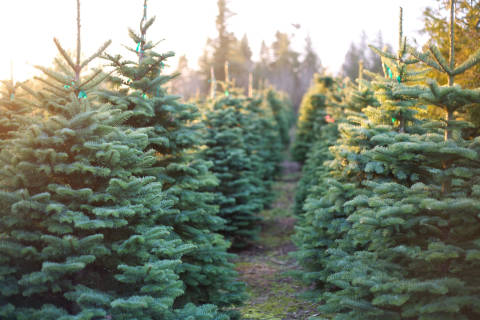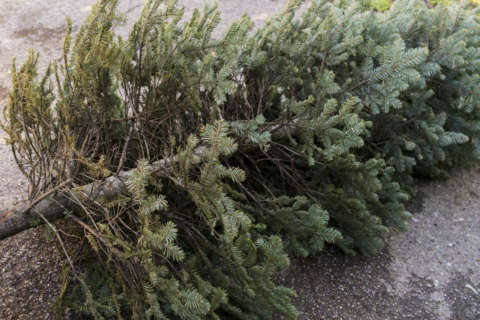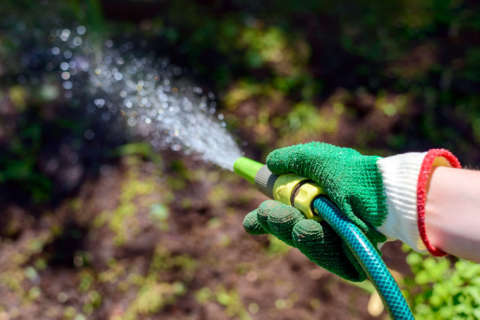Big difference in cut Christmas trees this year!
With Thanksgiving behind us, thoughts of Christmas trees are in the air.
We have a really important choice to make about indoor trees this year. Many growing regions that transport cut trees into our area from the way beyond were extremely dry this season, making for trees that will be difficult to keep watered.
Our region, however, had no such problems, just those annoying neighbors building Arks and looking for twins. That makes getting your tree cut fresh at a local Christmas tree farm an especially good idea this season because you know that they’ve been well-watered.
In addition, you’re helping prevent that family farm from being turned into condos and getting the brats outside where they can blow some of the stink off themselves and enjoy the wonder of being outdoors. (Hide their phones. Pretend their whining is a Christmas song.) And there’s often free hot chocolate and cookies; that’ll keep them quiet for a few minutes ….
The true secret to a really fireproof tree: Hydration!
Tree-picking time is here! Whether you get your cut tree from a local Christmas tree farm or some shady character outside of a bar in Georgetown, make sure the needles and branches are supple. If they feel stiff or snap, take a pass.
Have the tree shaken side to side to get rid of leaves, bugs and other debris. (Don’t bang the trunk into the ground.) Tree shaking machines are a real plus here.
When you get it home, use a bow saw to cut another inch or two off the bottom of the stump and immediately plunge the tree into a bucket of lukewarm water for several hours. If the tree came from out of town, it might suck up gallons.
Then attach the stand and bring the tree inside to the coolest possible area — away from any hot air vents or radiators, refill the stand with lukewarm water and wait a full 24 hours for the tree to spread before ornamenting it.
Gifts for gardeners
Kim down in Lancaster, Pennsylvania, writes: “I just want to say I’ve been a fan of yours for years; you have a lot of great advice to give; plus gardening is more popular than ever and the world needs you! My question: I have to buy a Christmas present for a relative who is an avid gardener. They have nice raised beds and use the Square Foot Gardening method. Thanks and keep up the great work!”
- If you know their sizes, they may enjoy a supply of baseball batting gloves; they make the BEST garden gloves.
- The Water Powered Weeder from Lee Valley Tools dispatches weeds while you (they) remain standing.
- A flame weeder, like the Bernzomatic Outdoor Torch does the same thing, with the added thrill of propane-powered flame. Poof go the dandelions!
- A motion activated sprinkler will protect those beds against deer and groundhog invasion.
- And finally, if they’re my age, a new set of knees.
Don’t succumb to rock salt!
I always try and make my pitch for lawn and landscape-safe ice-melt products before the first icy event, but nature started the game early this year! Hope you didn’t fall on your keister last week and that you will now search out the best de-icers for future storms.
My personal preference is calcium chloride; its much less corrosive than rock salt and melts ice at lower temperatures.
Other good alternatives include potassium chloride, magnesium chloride, and mixes of the big three.
Just avoid plant and lawn killing sodium chloride; it does the worst damage. Read ingredient labels carefully and look for the letters NaCl — that’s rock salt wearing a dress and high heels and trying to pass as an alternative de-icer
Poinsettias? Yes. Outdoors? No!
Got a great call on my Public Radio show, “You Bet Your Garden,” the other day from a young woman in Bethlehem, Pennsylvania, — the Christmas City — asking if poinsettias were indoor or outdoor plants, which reminded me that many people don’t know the story of this ultimate Christmas flower.
Far from being winter hardy, the poinsettia is totally tropical, hailing from Southern Mexico. Shown at the very first Philadelphia Flower Show in the mid-1800s, it’s outer leaves of green and inner bracts of red screamed ‘Christmas,’ and thus an odd tradition was born — a tropical plant for a winter holiday.
Keep poinsettias warm from the moment of purchase until they’re safely in the home.
Once a week, remove the decorative foil, sit the plant in water for an hour, drain and then put it back into place. Repeat this weekly and your poinsettia will stay on point!
Mike McGrath was editor-in-chief of ORGANIC GARDENING magazine from 1990 through 1997. He has been the host of the nationally syndicated public radio show “You Bet Your Garden” since 1998 and WTOP Garden Editor since 1999. Send him your garden or pest control questions at MikeMcG@PTD.net.







